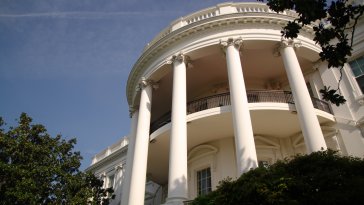
Take Two: ECB cuts rates as inflation revised down; China GDP growth slows
- 21 October 2024 (3 min read)
What do you need to know?
The European Central Bank (ECB) cut interest rates by 25 basis points (bp) for the third time this year, taking its benchmark rate to 3.25%, after Eurozone inflation fell below its 2% target. The bloc’s annual inflation rate was revised down to 1.7% in September from the earlier official estimate of 1.8% and compared to 2.2% in August. ECB President Christine Lagarde said the “incoming information suggests that economic activity has been somewhat weaker than expected” and added that the latest data points to “more sluggish growth”. AXA IM expects 25bp interest rate cuts at each ECB meeting until June 2025, taking the benchmark rate to 2.0%.
Around the world
China’s economy expanded by an annual 4.6% in the third quarter (Q3), less than Q2’s 4.7% and its slowest pace since early 2023. The figure beat market expectations of 4.5% and suggests that achieving the Chinese government’s ‘around 5%’ growth target is within reach. However, other data released last week including retail sales and industrial production figures were ahead of expectations. Beijing recently pledged fiscal and monetary stimulus measures to help shore up the world’s second-largest economy, which has struggled with problems in the property sector as well as weak domestic demand.
Figure in focus: $100trn
Global public debt is expected to surpass $100trn - around 93% of GDP - by the end of 2024, and approach 100% by 2030, according to the International Monetary Fund (IMF). This is 10 percentage points above 2019’s pre-pandemic level, with China and the US largely driving the increase. Public debt is expected to stabilise or fall for two-thirds of countries, but future debt levels could be higher than projected, partly due to large spending pressures and sizable unidentified debt, the IMF said. It urged nations to tackle risks now “with carefully designed fiscal policies that protect growth and vulnerable households, while taking advantage of the monetary policy easing cycle”.
Words of wisdom
National Biodiversity Strategies and Action Plans: A crucial framework outlining how individual countries plan to protect biodiversity and tackle its loss. Governments had committed to submit their updated National Biodiversity Strategies and Action Plans (NBSAPs) before the start of the United Nations biodiversity conference COP16, which begins on 21 October. However, over 85% of participating countries were reportedly set to miss this deadline, according to Carbon Brief and the Guardian newspaper last week. Among the 17 ‘megadiverse countries’ - nations which collectively harbour 70% of the world's biodiversity - only five have produced new NBSAPs, they said.
What's coming up?
As well as COP16, Monday marks the start of the Annual Meetings of the IMF and the World Bank Group. On Wednesday the Bank of Canada meets to decide on monetary policy; in September it cut its key interest rate by 25bp, taking it to 4.25%. On Thursday a spate of flash October Purchasing Managers’ Indices are reported, including composite data for the Eurozone, US, UK and Japan. Germany's closely watched Ifo Business Climate Index is issued on Friday. Japan’s general election takes place on Sunday.
Disclaimer
This document is for informational purposes only and does not constitute investment research or financial analysis relating to transactions in financial instruments as per MIF Directive (2014/65/EU), nor does it constitute on the part of AXA Investment Managers or its affiliated companies an offer to buy or sell any investments, products or services, and should not be considered as solicitation or investment, legal or tax advice, a recommendation for an investment strategy or a personalized recommendation to buy or sell securities.
Due to its simplification, this document is partial and opinions, estimates and forecasts herein are subjective and subject to change without notice. There is no guarantee forecasts made will come to pass. Data, figures, declarations, analysis, predictions and other information in this document is provided based on our state of knowledge at the time of creation of this document. Whilst every care is taken, no representation or warranty (including liability towards third parties), express or implied, is made as to the accuracy, reliability or completeness of the information contained herein. Reliance upon information in this material is at the sole discretion of the recipient. This material does not contain sufficient information to support an investment decision.
Issued in the UK by AXA Investment Managers UK Limited, which is authorised and regulated by the Financial Conduct Authority in the UK. Registered in England and Wales, No: 01431068. Registered Office: 22 Bishopsgate, London, EC2N 4BQ.
In other jurisdictions, this document is issued by AXA Investment Managers SA’s affiliates in those countries.
© 2024 AXA Investment Managers. All rights reserved
Risk Warning
The value of investments, and the income from them, can fall as well as rise and investors may not get back the amount originally invested.




